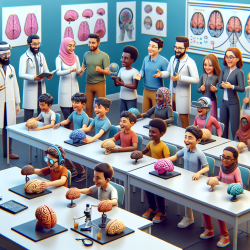Introduction
In the realm of speech-language pathology and beyond, the quest for continuous improvement in educational methodologies is paramount. The research titled A novel multimodal needs assessment to inform the longitudinal education program for an international interprofessional critical care team provides a compelling case for adopting data-driven, multimodal needs assessments to enhance educational outcomes. This study, conducted by a team of international researchers, underscores the importance of understanding the diverse learning needs of critical care professionals to tailor educational programs effectively.
The Power of Multimodal Needs Assessment
The study employs a novel multimodal approach to assess the learning needs of critical care professionals in China, utilizing both quantitative and qualitative methods. This comprehensive strategy involves:
- Q Methodology: Participants rank-order statements describing essential professional activities, providing insights into perceived learning priorities.
- Focus Group Interviews: These interviews delve deeper into participants' reasoning behind their rankings, revealing underlying motivations and preferences.
- Chart Audits: By reviewing medical and nursing records, unperceived learning needs are identified, highlighting areas for improvement in practice.
This mixed-methods approach not only captures perceived learning needs but also uncovers hidden gaps in knowledge and practice, offering a more holistic view of educational requirements.
Implications for Practitioners
For practitioners, particularly those involved in speech-language pathology, the implications of this research are profound. By adopting a similar multimodal assessment approach, educators can:
- Customize Educational Programs: Tailor curricula to meet the specific needs of diverse learner groups, ensuring more effective knowledge transfer.
- Enhance Learning Outcomes: Address both perceived and unperceived learning needs, leading to more comprehensive skill development.
- Foster Interprofessional Collaboration: Encourage collaboration across disciplines, enhancing the overall quality of care provided to patients.
Encouraging Further Research
While the study provides a robust framework for needs assessment, it also highlights the need for further research. Practitioners are encouraged to explore:
- The applicability of multimodal assessments in different educational settings.
- Innovative methods to integrate cultural and contextual factors into educational programs.
- The impact of customized curricula on long-term professional development and patient outcomes.
Conclusion
Incorporating data-driven, multimodal needs assessments into educational practice can significantly enhance the effectiveness of training programs. By understanding and addressing the diverse needs of learners, educators can create more impactful and sustainable educational interventions. For those interested in delving deeper into the original research, please follow this link: A novel multimodal needs assessment to inform the longitudinal education program for an international interprofessional critical care team.










